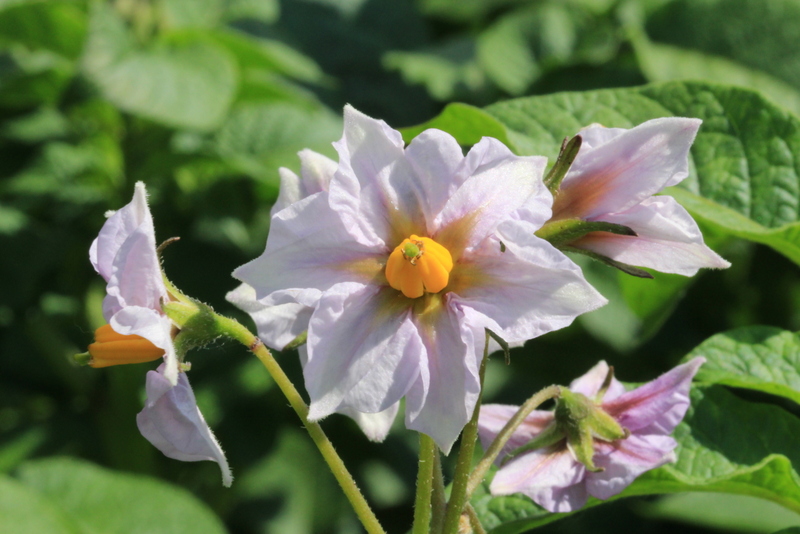Physiological Age of Seed Potato
Green sprouted tuber at bottom and little tubers formed on tubers from storage at top.Variety Dakota Pearl.
The 2011 growing year was late with late emergence and later readings in the winter test. The 2012 growing season was exceptionally early in North Dakota. There was an early planting and an early harvest. The Florida test in the winter of 2012/2013 was a very successful one, because all varieties emerged and readings could be done relatively early in every variety. The 2013 plantings are later than ever. The winter test this winter is expected to be late.
Such observations in the winter test are effects of the physiological age of the seed, something that has been observed for many years.
The physiological age of the seed starts when the tubers are being formed. It is influenced by variety, temperature, day length and stress etc. The stages of the physiological age are in Table 1.
Table 1. Stages of physiological age of seed potatoes.
|
|
|
PHYSIOLOGICAL STAGES |
|
|
||
|
YOUNG |
|
|
OLD |
|||
|
DORMANT |
APICAL |
SPROUTING |
TUBERIZATION |
|||
|
|
DOMINANCE |
|
|
|
|
|
|
NO SPROUT |
ONE SPROUT |
MULTIPLE |
BRANCHED |
HAIRY |
"LITTLE |
|
|
|
|
SPROUTS |
SPROUTS |
SPROUTS |
TUBERS' |
|
In general the physiological age of seed potatoes is considered from harvest till tubers are formed from that tuber. New tubers mark the end of the cycle for the seed tuber. In reality the determination of the total length of the physiological age cycle is determined by influences starting from tuberization. The period between the tuberization starting the tuber and the tuberization originating from that tuber is finite. It cannot be lengthened indefinitely.
Variety and temperature influence the physiological age the most. Stress such as drought, cutting seed potatoes and tuber-diseases also have an influence but not to the same degree. Short day length and higher temperatures shorten the period between tuberizations. There is little we can do about day length and temperature during the growing season. We can influence the temperature during storage, but we cannot undo the progress of the physiological age as influenced by the temperature during the growing season. In 2012 North Dakota planted very early and had a warm summer. In 2013 the planting was late. That would mean that the physiological age of the seed potatoes was advanced. That should be expected to result in fast emergence and more sprouts.
In storage we concentrate on keeping seed potatoes from sprouting. To lengthen the dormancy period seed potatoes are kept cool. Also a plant hormone can be applied that prevents sprouting or stops sprout growth. What we do not know is how much postponing sprouting will delay the start of tuberization. The question arose: “Does the clock keep ticking?” It would mean that we may feel safe because we do not see sprouts appearing but the time of tuberization is still approaching. When the “little tubers” stage is reached in storage the possibility to form sprouts and plants has ended. That may appear sooner than one expects when looking at firm tubers with few sprouts kept at cool temperature with or without application of a plant hormone.
Green sprouting is putting tubers that started sprouting in indirect sun light or artificial light. They will develop sprouts that stay short and turn green. Green sprouting is used to obtain an earlier crop. However there is only a yield advantage when the harvesting is done early. Picture 1 shows green-sprouted tubers without tuber formation while others had been kept in the dark and started forming tubers. All were of the same seed lot. It could indicate that green sprouting actually lengthens the period between tuberization. Green sprouting is not considered practical with large quantities of seed potatoes.
When tubers reach the physiological stage of “little tubers” they generally can be considered as having passed the stages of sprouting. They will not produce plants any more.
A very early planting one year followed by very late planting the next year may not happen again for many years. However it is worthwhile to find out how much the application of a plant hormone actually lengthens the period between tuberizations. It has been found very difficult to measure all parameters that influenced the physiological age of tubers.
Willem Schrage, North Dakota State Seed Department.





